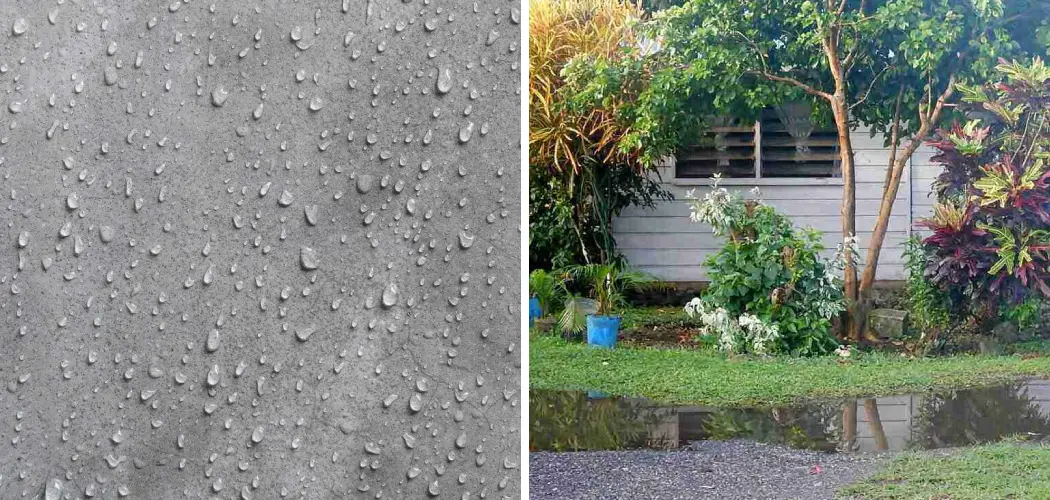Are you dealing with standing water on your patio? It can be a nuisance and even a potential health hazard. But don’t worry- there are some simple steps you can take to get rid of the problem.
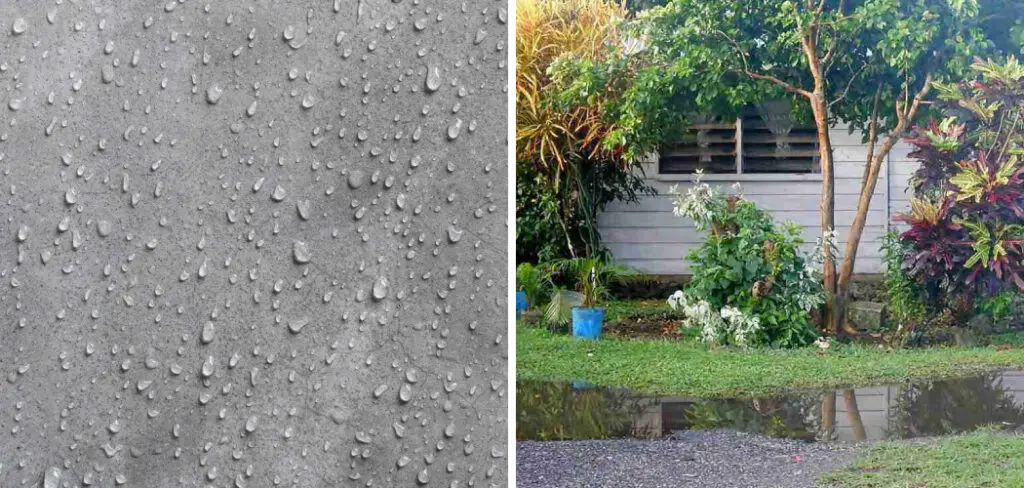
If you’ve noticed puddles of standing water building up on your patio, then you aren’t alone. It can be extremely inconvenient to have a wet area at the entrance or exit of your home and is something that must be dealt with effectively and quickly.
Whether it’s due to poor drainage, excessive rain showers or anything else, there are many different strategies available to help fix this issue without having to do major renovations.
In this blog post, we will be covering some simple steps on how to fix standing water on patio on your patio in no time so that you can enjoy spending relaxing evenings outside again!
What are the Reasons of Standing Water on Patio?
The first step in fixing standing water on a patio is to identify the cause. There are many factors that can lead to puddles of standing water, including:
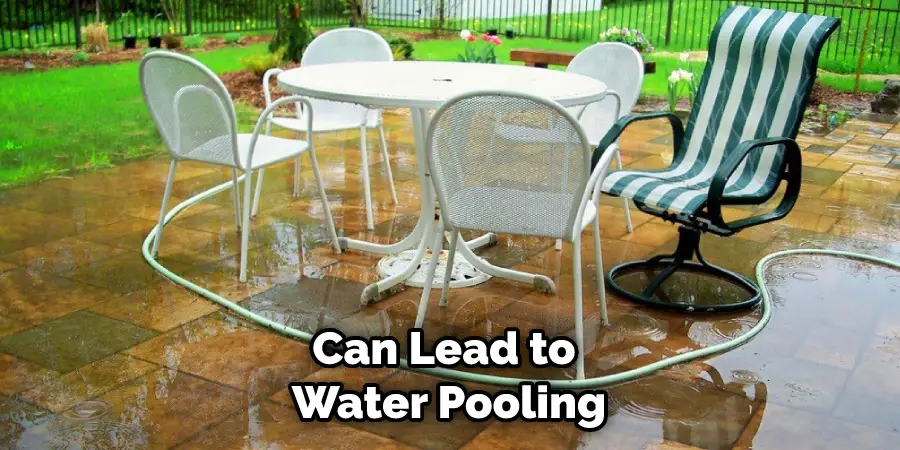
- Improper Drainage: If there is an obstruction blocking the free flow of water from your patio, then it could be causing you to have standing water puddles.
- Poor landscaping: If your patio is not properly tilted away from your house, then it can lead to water pooling up on the surface and not draining away correctly.
- Heavy Rain Showers: If you are experiencing unusually heavy downpours of rain, it may be leading to a large amount of water accumulating quickly on your patio surface.
- Broken Gutters or Drainage Pipe: A broken gutter or drainage pipe will cause water to overflow onto your patio, leading to an accumulation of standing water over time.
What Will You Need?
Once you have identified the cause of the standing water, you can then begin to take action. Depending on how severe the issue is, there may be a few different steps required in order to get rid of it. Here are some materials that you might need:
- Shovel
- Landscaping fabric
- A sump pump
- Gravel or sand
- Drainage pipes
- Professional plumber (optional)
When you have all the necessary materials, you can begin to take action and fix standing water on your patio.
10 Easy Steps on How to Fix Standing Water on Patio
Step 1. Remove the Debris:
Start by removing any debris from the patio surface that can be blocking water flow. If there are any weeds, rocks or other obstructions in the way, remove them. You can use a shovel to help with this.
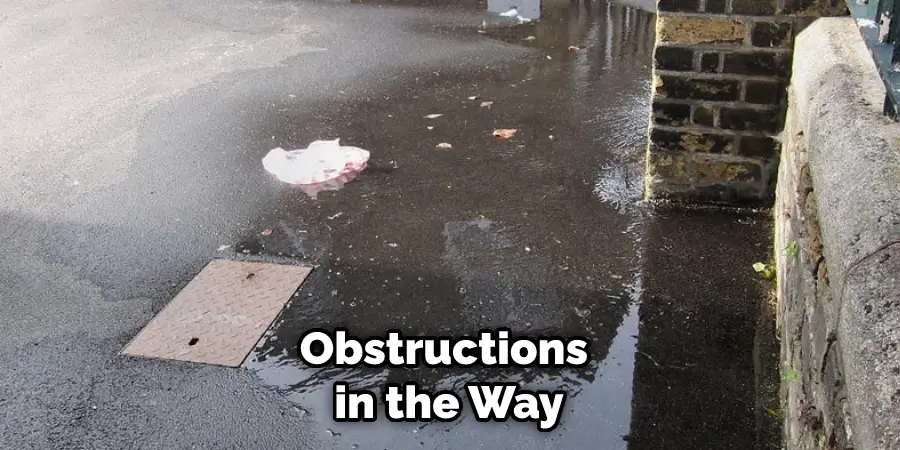
Step 2. Tilt the Patio:
If your patio is not properly tilted away from your house, then it can cause water to pool up and become stagnant. Use a shovel to gently tilt the surface of your patio so that it slopes slightly downward towards the yard or street. Be careful not to create any dips or bumps that can disrupt water flow.
Step 3. Lay Down Landscaping Fabric:
This will help prevent any weeds or grass from growing through the cracks in your patio and causing blockages in the future. Simply lay down landscaping fabric over the entire area before covering it with gravel or sand, if desired. Ensure that you secure the edges with a few pegs so that it doesn’t move around.
Step 4. Install a Sump Pump:
If there is no existing drainage system on your patio, then you might need to install a sump pump. This will ensure that any excess water is quickly and efficiently drained away from the patio surface. Moreover, it will help to prevent future water buildup.
Step 5. Add Gravel or Sand:
Adding gravel or sand over the landscaping fabric will help create an even surface that can easily absorb water without becoming stuck. Make sure to spread it evenly so there are no dips or bumps that can disrupt water flow. If you are using gravel, then consider adding a layer of sand on top to help create an even smoother surface.
Step 6. Install a Drainage Pipe:
If you want to be extra cautious, then you can install a drainage pipe under your patio surface or around the perimeter of your patio area. This will allow water to drain away quickly and easily, preventing puddles of standing water from forming in the first place. Use a professional plumber for this job if necessary.
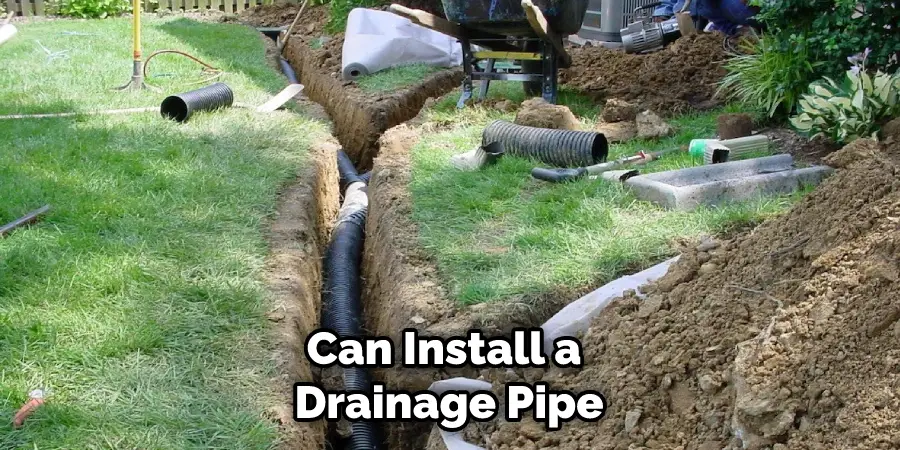
Step 7. Clean Up:
Once you’re done with all the steps, it’s time to clean up. Remove any debris or excess gravel/sand from the patio surface and dispose of it properly. If you have installed a drainage pipe, then be sure to check it regularly and make sure that it is free of any blockages.
Step 8. Test:
Now that you’ve done all the necessary steps, it’s time to test how well your new drainage system is working. Have a few buckets of water ready and pour them over different sections of the patio to see how quickly they drain away. Adjust your landscaping fabric, sump pump and/or drainage pipe accordingly if needed for better results.
Step 9. Monitor:
Keep an eye on how much water accumulates on the patio surface after each rain shower or watering session and make sure that it drains away quickly without leaving behind any puddles. This will help you keep on top of any potential issues before they become a bigger problem.
Additionally, it’s a good idea to regularly check your sump pump and drainage pipes for any blockages or damage.
Step 10. Maintenance:
To ensure that your patio remains in good condition and water continues to drain away properly, it’s important to keep up with regular maintenance. Check the surface for any weeds or obstructions, and adjust the tilt if necessary. Also, make sure that you clear out your gutters periodically so they don’t overflow onto the patio surface.
By following these steps, you can easily fix standing water on your patio and keep it from becoming a problem again in the future. If done correctly, you should be able to enjoy a dry and comfortable outdoor area without having to worry about pesky puddles forming every time it rains!
5 Additional Tips and Tricks
- Create a gentle slope across your patio that will allow water to run off instead of pooling in one area. Aim for about an inch drop in elevation over every eight feet or so.
- Inspect downspouts and gutters to make sure they are clear of debris, allowing them to drain properly away from your patio area when it rains.
- Install french drains around the perimeter of your patio if there is no other way for water to get away from the area during heavy rain events.
- Seal any cracks or gaps on the surface of your patio with concrete sealer or epoxy.
- Consider adding a waterproof membrane or sealer over the surface of your patio to ensure that no water can get through and cause any standing water issues. This is especially important for patios that are surrounded by trees, as leaves and other debris can clog drainage systems easily.
Following these steps and tips will help you fix standing water on your patio once and for all! Not only will it keep your outdoor area safe from flooding, but it also helps protect your home from potential damage caused by puddles and pooling water.
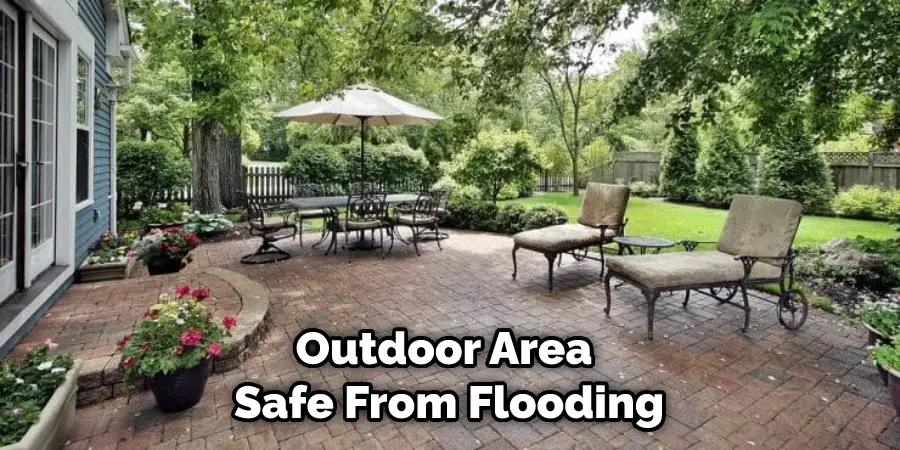
5 Things You Should Avoid
- Avoid using a hose to clean the patio if it is not properly drained. Doing so could cause further flooding, as the water will not be able to escape.
- Do not use a pressure washer, as this can spread standing water around and create even more of a mess.
- Avoid creating any large amount of runoff that may run off into nearby areas, such as gardens or other homes in the neighborhood.
- Do not create higher points on your patio in an attempt to divert water away from certain areas; instead, try to make all levels even so that water can easily flow over them when it rains.
- Avoid leaving mulch or soil around the area where you have standing water, as this can clog up drainage systems and cause the water to remain in one place.
If your patio has standing water, it’s important to take steps to address the issue as soon as possible. When done correctly, you can easily fix the problem without having to call a professional. Following these tips will help you successfully remove standing water from your patio.
Conclusion
As with any challenge you might encounter when remodeling or constructing a patio, it’s always feasible to tackle them by breaking down the imposing task into smaller and more manageable chunks.
Collecting and controlling surface water is an important step in constructing any patio and with this guide, you can rest assured that you have done your best to tackle the problem and protect your space from costly damages.
While the steps provided are simple enough for anyone to follow, if you find yourself still having difficulties it never hurts to hire an experienced professional who can help take some of the responsibility off your shoulders!
By taking preventive measures against standing water early on, you will no only be able to save time and money but can look forward to many future years of enjoying your new space free of worries. Hopefully, the article on how to fix standing water on patio has been helpful. Good luck!

